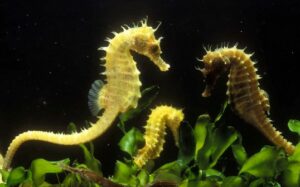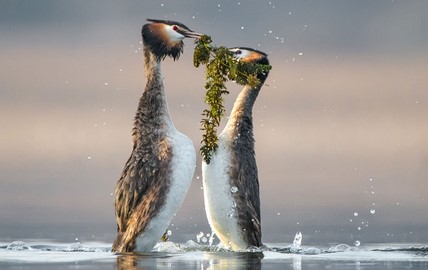The natural world is a tapestry woven with the threads of countless lives, each playing a unique role in the grand spectacle of existence. From the majestic forests to the depths of the oceans, life in all its forms has adapted and thrived, creating a delicate balance that sustains our planet. In this article, we’ll embark on a fascinating journey through the realms of animal and plant life, discovering the interconnectedness and wonder that define our biosphere.

A Symphony of Biodiversity
Earth is home to an astonishing diversity of life forms. The number of known species stands at around 1.2 million, but scientists estimate that there could be millions more yet to be discovered. This biodiversity is a testament to the adaptability and resilience of life.
Plant Life: The Silent Architects
Plants are the silent architects of our world, shaping landscapes, influencing climate, and providing the foundation for the web of life. From towering redwoods to tiny algae, plant life encompasses a wide spectrum of species, each with its unique adaptations and contributions.
Photosynthesis: The Miracle of Greenery
At the heart of plant life lies photosynthesis, a miraculous process that transforms sunlight into energy. Through this process, plants not only create their sustenance but also release oxygen into the atmosphere, which is essential for the respiration of animals, including humans.
The Circle of Life: Predators and Prey
In the intricate web of life, predators and prey engage in a perpetual dance. Predators maintain the health and balance of ecosystems by controlling prey populations, while prey species develop strategies to evade their predators. This dynamic keeps ecosystems robust and resilient.
Animal Adaptations: Nature’s Ingenious Solutions
Animals have evolved an astonishing array of adaptations to thrive in diverse environments. From the camouflage of chameleons to the streamlined bodies of dolphins, these adaptations are nature’s ingenious solutions to the challenges of survival.
Symbiosis: Nature’s Partnerships
Symbiotic relationships are the collaborative partnerships that exist between different species. Examples include mutualism, where both species benefit, and parasitism, where one benefits at the expense of the other. These relationships are essential for nutrient cycling and ecological stability.
Ecosystem Services: Nature’s Benefits
Ecosystems provide a wide range of services that benefit both humans and the environment. These include pollination of crops, regulation of climate, purification of water, and the provision of food and medicine. Recognizing the value of these services is crucial for conservation efforts.
The Threat of Extinction
Human activities, such as habitat destruction, pollution, and climate change, pose a significant threat to animal and plant life. Species are going extinct at an alarming rate, and the loss of biodiversity has far-reaching consequences for the health of our planet.
Conservation: Protecting the Web of Life
Conservation efforts aim to protect and restore biodiversity. These efforts include the establishment of protected areas, breeding programs for endangered species, and sustainable resource management practices. The goal is to ensure that future generations can continue to marvel at the wonders of nature.
The Magic of Animal Behavior
Animal behavior is a fascinating aspect of the natural world. From the intricate courtship dances of birds to the complex social structures of elephants, the study of animal behavior reveals the depth of intelligence and emotion that exists in the animal kingdom.
Plant Intelligence: The Secret Lives of Trees
Recent research has shed light on the intelligence of plants. They communicate with each other through chemical signals, respond to environmental cues, and even exhibit a form of memory. The interconnectedness of plant life is a testament to the complexity of the natural world.
The Role of Humans
As the most dominant species on Earth, humans play a significant role in shaping the future of animal and plant life. Our choices, from land use to resource consumption, have profound impacts on the natural world. Recognizing our responsibility and taking action to protect biodiversity is essential for the health of our planet.
Conclusion: Guardians of Life
In conclusion, animal and plant life are the threads that weave the intricate tapestry of our planet’s biosphere. From the smallest microorganisms to the mightiest mammals, each life form contributes to the delicate balance that sustains us all. It is our duty to protect and preserve the richness of biodiversity for future generations to marvel at and cherish. The story of animal and plant life is a story of resilience. It is a story of adaptation, and the enduring beauty of the natural world.

